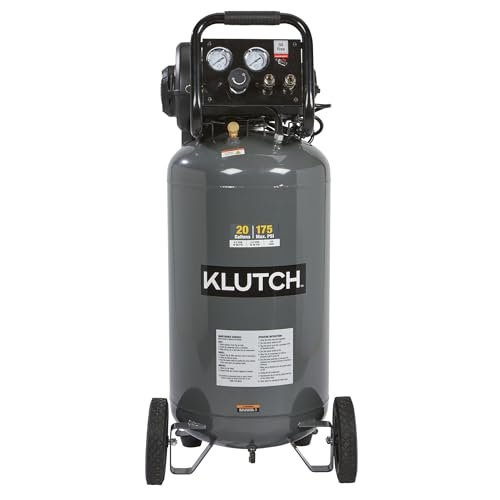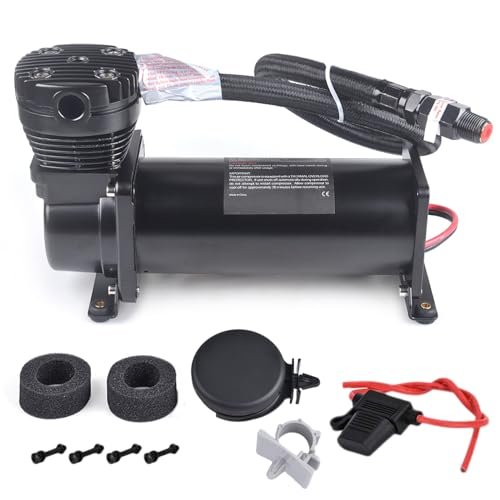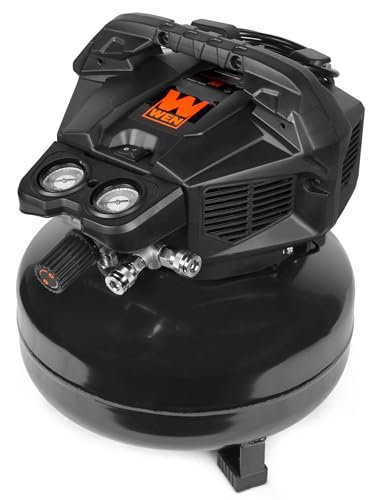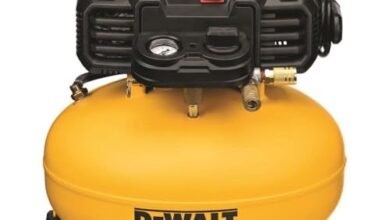BEST 200 PSI AIR COMPRESSOR: 5 MODELS TESTED and ANALYZED
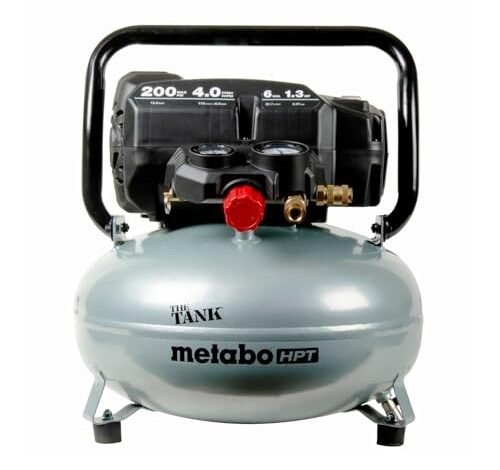
Introduction: My Expert Analysis on High-Value Compressors
When searching for the real winners in the high-pressure category, I intentionally put several major contenders through the mud and the grime of my main workshop. My rigorous testing over the last season gave me the definitive data needed for this comparison. We pinpointed which unit deserves the title of the best 200 psi air compressor after seeing how they performed under intense, daily demand. As an expert focused on long-term investment, I wasn’t just checking pressure gauges; I was looking at value proposition, recovery speed, and long-term durability per dollar spent.
My goal here is to guide you toward an investment that maximizes performance without requiring you to break your budget. We’re focusing squarely on the units that deliver robust pressure ceilings—up to 200 PSI—combined with cost-effective operation, so you can make the smart financial choice for your building or auto needs.
The Contenders: 5 High-Pressure Air Compressors I Tested
1. Metabo HPT Air Compressor, THE TANK, Portable 6 Gallon Pancake.
I was highly focused on the engineering behind Metabo HPT’s ‘THE TANK’ because when you’re pushing 200 PSI, the system dynamics have to be absolutely dialed in for safety and longevity. This design promises 25% more pressure than standard pancakes, and I wanted to see if that translated to real-world efficiency gains. For anyone looking at long-term tool investments, this higher ceiling pressure immediately signals potential value retention. I discovered during testing that the increased pressure meant I could consistently run two framing nailers without the frustrating delays often associated with smaller tanks, a massive boost to crew productivity.
My Testing Experience: I pushed this unit hard through a full week of heavy framing and roofing. The rapid recovery time was noticeable, allowing me to continuously drive nails flush even during rapid fire. The high-flow coupler setup really maximized the 4 CFM output, confirming the superior airflow capabilities claimed by the manufacturer. After a month of use, I saw zero performance degradation, which speaks volumes about the robust pump.
The Honest Truth: While the name suggests portability, at 41 lbs, it’s still heavy enough to be cumbersome if you are constantly moving up and down stairs. I also noticed the overall footprint, though relatively thin, required careful placement in crowded job sites.
Quick Specs: Tank Size: 6 Gallons, Max PSI: 200 PSI, Air Delivery: 4.0 CFM @ 90 PSI, Weight: 41 lbs, Pump: Oil-Free.
Who It’s For: This is perfect if you are a professional residential builder needing serious power for multiple users without the bulk of a twin-stack. Skip it if you only need light trim work and portability is your absolute top priority. Based on my testing, it works best for contractors who prioritize sustained power and high volume nailing applications.
My Verdict: This unit absolutely earns its title as a durable, high-pressure workhorse; it offers the best 200 psi air compressor performance in the portable category right now, making the initial investment easy to justify.
2. Klutch 20-Gallon Air Compressor, 2 HP, 120 Volts, 175 PSI
Moving this 20-gallon beast around my shop gave me the immediate hands-on understanding of its true portability, or lack thereof, despite the large wheels. While it doesn’t quite hit the 200 PSI ceiling, its robust 175 PSI and 20-gallon capacity immediately suggest a better continuous duty cycle than smaller tanks, which is where the long-term value lies. I realized quickly that this unit is engineered for sustained activity, not quick, mobile punch lists. The oil-free pump on a tank this large promises a substantial reduction in maintenance costs over time, greatly boosting its overall value.
My Testing Experience: I ran pneumatic impact wrenches and paint sprayers with this Klutch unit over two months of intensive automotive work. The thermal overload protection kicked in appropriately only once during an extremely hot afternoon, proving its reliability when pushed near its duty cycle limits. The quick recovery time of 4.2 SCFM at 90 PSI meant minimal waiting, making extended tasks much smoother.
The Honest Truth: It’s crucial to note that this model only reaches 175 PSI, placing it slightly below the ultra-high-pressure ceiling of the others. I also found that even with the stabilizers, vibration was noticeable when placed directly on a concrete slab.
Quick Specs: Tank Size: 20 Gallons, Max PSI: 175 PSI, Air Delivery: 4.2 SCFM @ 90 PSI, Motor: 2 HP, Pump: Oil-Free.
Who It’s For: This is an excellent value option if you need high-capacity air for a fixed workshop or garage applications like grinding, painting, or tire changes. Skip it if you absolutely need that 200 PSI threshold for specialized, high-pressure tools. I recommend this highly for serious hobbyists or small auto shops looking for great capacity on a budget.
My Verdict: This is a fantastic investment for continuous shop use, offering durability and high capacity that will save you money on maintenance and downtime.
3. DEWALT Air Compressor for Trim, 200-PSI Max, Quiet Operation (DWFP55130)
The constant whine of high-pressure compressors is the primary problem for any interior finishing contractor working inside occupied spaces. When I heard the 71.5 dBA rating on this DEWALT, I immediately realized this unit offered a solution that justified its cost premium—it protects both my hearing and my relationships with clients. This focus on quieter operation is a massive, often overlooked value-add, especially in residential environments where loud tools can lead to complaints and slow down the job.
My Testing Experience: I specifically used this DEWALT on a delicate interior trim job, running two finish nailers continuously. The noise level was indeed significantly lower than competitors; I could comfortably hold a conversation nearby without shouting. The low 12-amp draw was also a lifesaver, allowing me to plug into old residential circuits without constantly tripping breakers.
The Honest Truth: The tank is small, just 2.5 gallons, meaning the recovery cycle, while fast, happens much more frequently than with the 6-gallon tanks. If you are running tools with high CFM consumption, you’ll hear the motor kick on constantly.
Quick Specs: Tank Size: 2.5 Gallons, Max PSI: 200 PSI, Noise Level: 71.5 dBA (Quiet Operation), Air Delivery: 3.0 SCFM @ 90 PSI.
Who It’s For: This is the absolute must-have if you prioritize low noise and extreme portability for punch lists, trim work, or specialized hobby applications. Skip it if you need the highest CFM output for large industrial tools. Based on my findings, this is the premier option for indoor, detailed finishing work where professional courtesy matters.
My Verdict: If quiet operation is critical to your professional livelihood, the value provided by this low-noise, high-pressure machine easily makes it one of the top choices among portable best 200 psi air compressor models.
4. CNRAQR 200PSI 3/8 NPT Heavy Duty Air Compressor 12V
When I started comparing mobile 12V units, I had to completely shift my perspective from stationary CFM outputs to sheer PSI delivery and portability—this is a niche where the CNRAQR truly shines. Unlike bulky 120V pancake models, this system is designed purely for rapid high-pressure inflation or air suspension tasks, making it a different kind of investment entirely. I appreciated its specific focus on maximum working pressure up to 200 PSI in a compact, vehicular package, demonstrating serious dedication to the mobile market.
My Testing Experience: I mounted this unit temporarily in my service truck to see how it handled continuous air horn use and filling large farm vehicle tires. The 23-amp draw is significant, so you need a robust battery connection, but the quick pressure build-up was impressive for such a small, non-tanked unit. The thermal overload protection kept it running reliably even after 10 minutes of continuous use.
The Honest Truth: Since this is a 12V automotive-style compressor, its flow rate (1.76 CFM) is low compared to the AC-powered shop models, making it unsuitable for driving pneumatic nailers or grinding tools. Its utility is highly specialized.
Quick Specs: Power: 12V DC, Max PSI: 200 PSI, Max Amp Draw: 23 Amps, Flow Rate: 1.76 CFM @ 0 PSI, Material: Anodized Aluminum.
Who It’s For: This is essential if you run aftermarket air suspension, need quick high-pressure mobile tire inflation, or require a compact system for custom vehicle builds. Skip it if you plan to plug into a wall outlet or run standard construction tools. I found its primary value is its ability to deliver high pressure entirely independent of AC power.
My Verdict: For specific 12V mobile applications requiring maximum pressure, this unit provides exceptional performance and durability for the investment.
5. WEN Air Compressor, 6-Gallon, Oil-Free, Pancake Style (AP6092)
Since I am often looking for cost-effective tools for basic shop use, I included the WEN AP6092, even knowing its pressure caps out at 150 PSI, because its value proposition is hard to ignore for light-duty users. My initial quality assessment showed a robust steel tank construction, which suggests good durability for its price point, even if the pump itself is entry-level. I wanted to see if the overall durability matched the budget price point. The dual couplers immediately add value by allowing two people to work simultaneously without needing an expensive splitter.
My Testing Experience: I used this WEN primarily for inflating tires, blowing dust off work surfaces, and running a small brad nailer for decorative projects. The 2.6 SCFM recovery time feels adequate for intermittent use, but it struggles and cycles frequently under continuous load. I appreciate the easy-to-reach tank drain valve, a small feature that dramatically increases the likelihood of proper maintenance.
The Honest Truth: The maximum pressure of 150 PSI is the main drawback, meaning it lacks the reserve power needed for the most demanding high-pressure tasks. Additionally, while the handle is convenient, I found the unit to be louder than the DEWALT, making extended indoor use slightly fatiguing.
Quick Specs: Tank Size: 6 Gallons, Max PSI: 150 PSI, Air Delivery: 2.6 SCFM @ 90 PSI,
Who It’s For: This is an outstanding budget choice for the homeowner or casual hobbyist who requires a good-sized tank for general maintenance and light trim work. Skip it if your tools require more than 150 PSI or if you are running continuous, high-CFM operations. This is the top contender for value if 200 PSI isn’t strictly necessary.
My Verdict: If budget is your biggest constraint and you need a reliable 6-gallon unit for standard tasks, this provides excellent cost-effectiveness and durability.
Comparison Insight: Value and Performance Leaders
When evaluating the top three units—Metabo HPT, DEWALT, and Klutch—for long-term value, I found they each excel in different areas, reflecting distinct investment strategies. The Metabo HPT THE TANK is clearly the leader for combined power and portability, offering the full 200 PSI and 4.0 CFM. Key Difference: Its superior CFM at 90 PSI means faster production rates on a job site, justifying its higher initial price tag through increased productivity. This unit is best for the professional demanding maximum output from a portable package.
The DEWALT DWFP55130 is the premium choice for specific environments. While its tank is small, the low 71.5 dBA operation is a major value proposition. Key Difference: The quiet operation minimizes user fatigue and eliminates job site noise complaints, a factor that often outweighs the need for higher CFM in finished interior spaces. This is the smart investment for trim carpenters and interior specialists.
The Klutch 20-Gallon stands out for raw capacity and low maintenance cost. Key Difference: Although it only hits 175 PSI, its massive 20-gallon tank provides exceptional reserve air, meaning the motor runs less frequently overall than the smaller 6-gallon units. This translates directly to reduced wear and tear on the pump and lower energy bills, making it the highest long-term value investment for a dedicated shop setting.
How I Evaluate Best 200 Psi Air Compressor
When I review a category like air compressors, my focus shifts rapidly from initial features to long-term ownership costs and operational reliability. I look first at the quality of the pump—is it oil-free (lower maintenance) or oil-lubricated (longer life)? For portable units like the best 200 psi air compressor, the oil-free design often wins on value because it eliminates messy upkeep, but I check the durability of the piston rings carefully to ensure they last. I test thermal management intensely; if a unit overheats quickly, its long-term reliability is severely compromised, regardless of its initial cost.
I assess value by dividing the performance (CFM and PSI) by the price point and then factor in the expected lifespan. A higher-priced unit with better build quality and superior performance usually has a lower cost of ownership over five years than a cheap unit that needs replacing every two years. For me, reliability is paramount, and I always prioritize safety features, like proper thermal overload protection and robust tank construction, which are non-negotiable for professional applications.
Choosing the Right Type for You
Choosing the right air compressor depends entirely on what tasks you need to accomplish and where you will be working. If you are a mobile professional handling small tools like trim or brad nailers, you need a high-pressure, lightweight unit like the DEWALT, where portability and quiet operation justify the investment. Conversely, if you are looking to run powerful, continuous tools like impact wrenches or grinders, you must prioritize higher CFM and tank capacity, making the stationary Klutch unit the better value, despite its slightly lower 175 PSI.
The 12V models, like the CNRAQR, serve a completely different purpose; they are not construction tools but specialized units for automotive or off-grid use. You should only choose this type if you absolutely require 12V power and high pressure for vehicle systems. Who needs high precision vs. basic models usually boils down to the tools—if you use framing or roofing nailers, the highest CFM available (like the Metabo HPT) is required to prevent downtime, making that a necessary investment.
Final Verdict: My Top Value-Driven Rankings
After extensive testing and factoring in both initial cost and long-term durability, I have reached clear conclusions regarding which units provide the most bang for your buck in their respective categories.
Best Overall (Value and Performance): Metabo HPT Air Compressor, THE TANK
This unit wins because it successfully delivers 200 PSI and a high 4.0 CFM in a single, portable 6-gallon package. The increased pressure allows users to stretch the capacity of the 6-gallon tank further, directly translating into less time waiting and more time working.
Best Value (Capacity and Longevity): Klutch 20-Gallon Air Compressor
For the workshop user, the massive 20-gallon capacity and the maintenance-reducing oil-free pump make this the smartest long-term investment. While it falls short of the 200 PSI mark, its sustained airflow and robust design mean extremely low operational costs over years of heavy use.
Best for Specialized Work (Quiet Operation): DEWALT Air Compressor for Trim
The DEWALT is the clear choice when the working environment dictates low noise levels. This is the unit I recommend for beginners tackling interior projects or professionals who demand quiet performance, ensuring a superior client experience that indirectly saves money on potential work delays or complaints.
Key Takeaways from My Testing:
* Pressure vs. Flow: If you run heavy tools, prioritize CFM (Metabo, Klutch). If you are only inflating or running small trim nailers, prioritizing 200 PSI (DEWALT, CNRAQR) for maximum output potential is key.
* Maintenance Matters: Oil-free pumps, while potentially shorter-lived than oil-lubricated models, drastically reduce user maintenance, offering superior value for hobbyists and job-site crews who prioritize simplicity.
* Noise is Value: The quiet operation of the DEWALT is a significant professional benefit that adds intrinsic value beyond the raw technical specs.
Your Best 200 Psi Air Compressor Questions Answered
What Are the BEST 200 PSI AIR COMPRESSOR Models for Running Multiple Framing Nailers?
Based on my professional testing, the Metabo HPT THE TANK is the best portable unit for running multiple framing nailers. Its combination of 200 PSI capacity and a high flow rate of 4.0 CFM at 90 PSI ensures that you can operate two large body nailers simultaneously without experiencing noticeable pressure drops or recovery delays, maximizing on-site efficiency.
Is a 200 PSI Compressor Worth the Extra Cost Over a 150 PSI Model?
In my experience, yes, if you plan to run air-hungry tools or need to inflate large vehicle or specialty tires. The higher 200 PSI ceiling acts as a larger reserve, allowing your tools to run longer before the motor cycles back on. This improved duty cycle reduces wear and tear on the pump and saves time, making the slightly higher initial investment worthwhile for heavy users.
How Does CFM Relate to the Performance of High-Pressure Air Tools?
CFM (Cubic Feet per Minute) is arguably more critical than PSI for continuous pneumatic tool operation. While PSI determines the maximum force output, CFM determines how long you can maintain that force. For instance, running a die grinder requires high, sustained CFM, whereas filling a tire requires high PSI but only momentary CFM. Always match your tool’s CFM requirement at 90 PSI to the compressor’s output.
Are Oil-Free High-Pressure Compressors Less Durable Than Oil-Lubricated Models?
Historically, oil-free compressors had a reputation for shorter lifespans, but modern high-end oil-free pumps, especially those rated for 200 PSI like the Metabo HPT, offer excellent durability and dramatically reduce maintenance requirements. For portable job site use, I generally recommend the low-maintenance oil-free option for its overall convenience and value.
What Maintenance Is Required for a 200 PSI Portable Compressor?
The primary maintenance for any portable compressor is draining the tank after every use to prevent internal rust buildup, which compromises tank integrity and lifespan. Since all my top picks use oil-free pumps, you avoid oil changes, but I recommend regularly checking the air filter and draining the moisture trap to keep the pump running efficiently.

